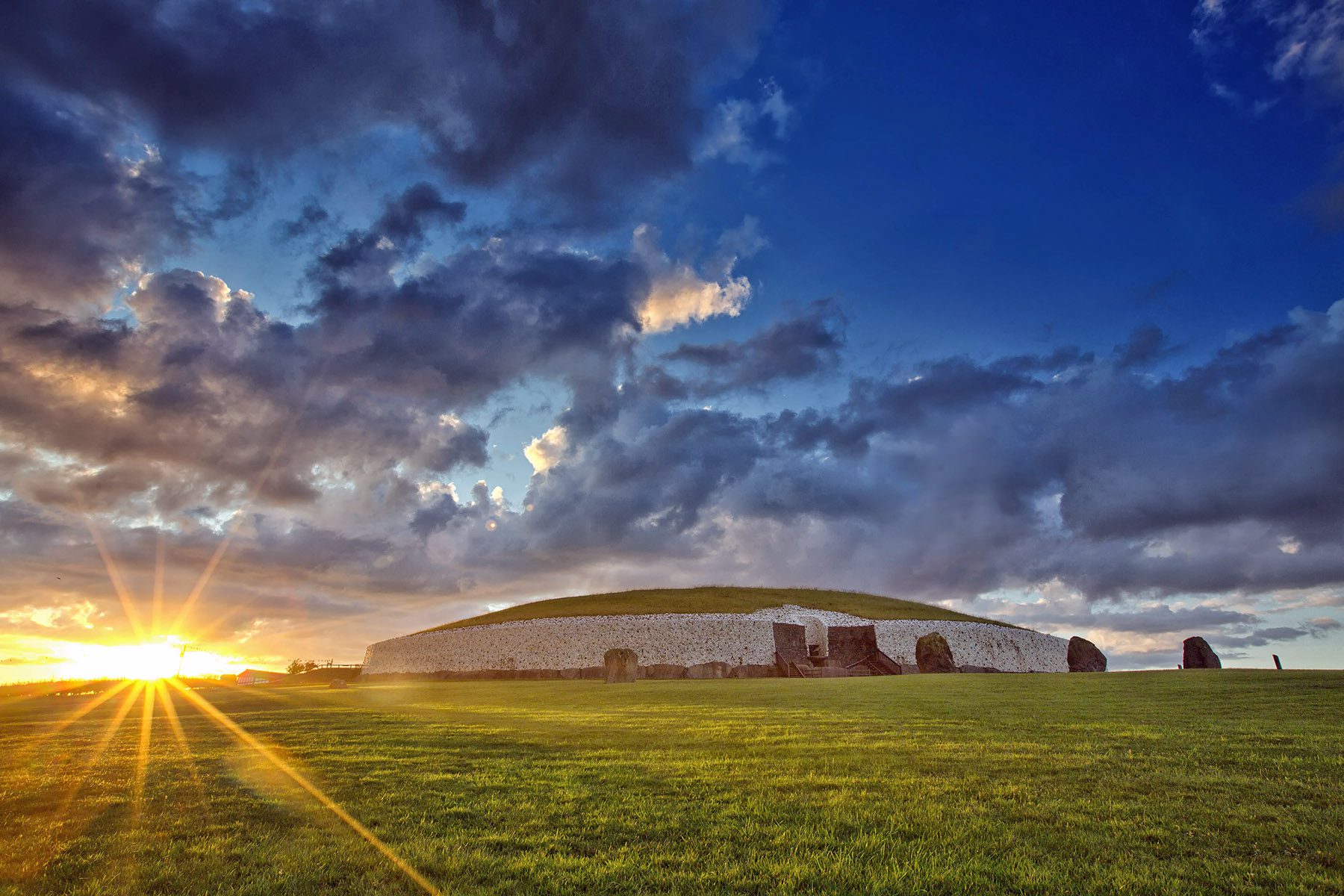Boyne Valley, Brú na Boinne
Solar sites of stone age mystery
Brú na Boinne, Boyne Valley is one of Europe’s most impressive stone age burial sites.
Discover Boyne Valley, Brú na Boinne
Nestled in the lush landscape of the Boyne Valley, Ireland’s most captivating archaeological landscape awaits your exploration – Brú na Bóinne. This designated World Heritage Site boasts the remarkable prehistoric passage tombs of Knowth, Newgrange, and Dowth, constructed around 3200 BC. Stepping into this paramount Neolithic site, you’ll be immersed in the mysteries of our ancient past.
Among these wonders, Newgrange stands out as an awe-inspiring testament to our ancestors’ engineering prowess. Dating back over 5,000 years, this enigmatic passage tomb has puzzled historians and archaeologists, leaving an indelible mark on our understanding of prehistoric civilizations.
At the heart of the Boyne Valley, Newgrange reigns as one of Europe’s most significant Neolithic sites, predating both Stonehenge and the Great Pyramids of Giza. Its meticulous construction and celestial alignments offer invaluable insights into ancient knowledge of astronomy, architecture, and spirituality.
The massive mound, adorned with intricately carved megalithic art, showcases the architectural ingenuity of its builders. Spirals, geometric patterns, and animal motifs rich in symbolism continue to captivate researchers, sparking debates about their meanings and significance.
But the true marvel of Newgrange unfolds during the winter solstice when a narrow beam of sunlight dramatically illuminates the central chamber. This spectacle, precisely aligned with celestial events, highlights the deep reverence the ancient people held for the changing seasons.
To embark on this remarkable journey, begin at the Brú na Bóinne Visitor Centre, where you’ll be transported back in time through interactive exhibits. From there, venture to Newgrange and Knowth on a shuttle bus to witness firsthand the wonders of Ireland’s Neolithic past. Remember to pre-book tickets to access these awe-inspiring monuments. Come and explore Brú na Bóinne, a living testament to the ingenuity and artistry of our ancestors.
The nearby Hill of Tara holds immense historical significance, dating back to the late Stone Age with a passage tomb. However, its true importance emerged during the Iron Age and the Early Christian Period, when it became the seat of the high kings of Ireland. Even St. Patrick visited in the fifth century, and though its halls and palaces have vanished, notable sights like the Lia Fáil, the great coronation stone, can still be admired on An Forradh monument. Tara remains a symbol of Ireland’s ancient heritage and royalty.





